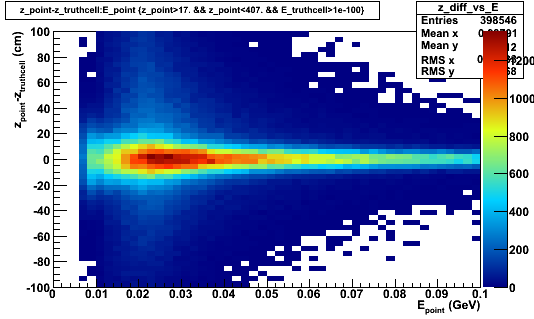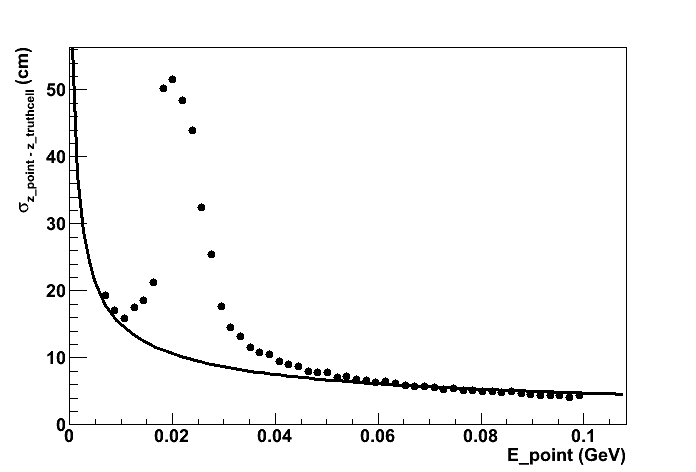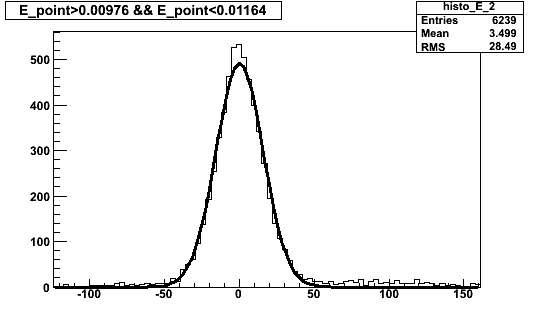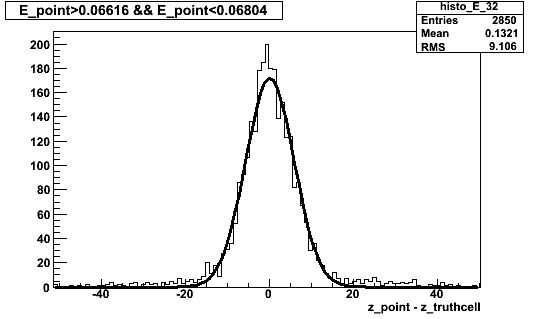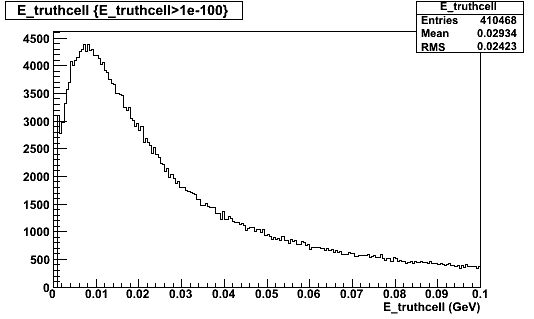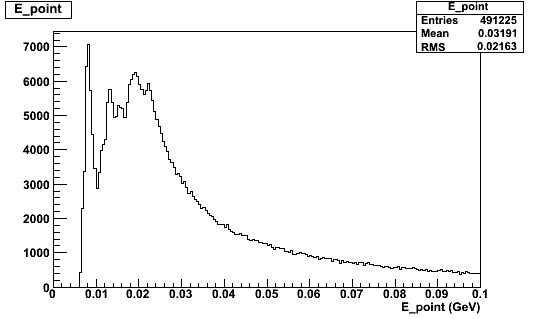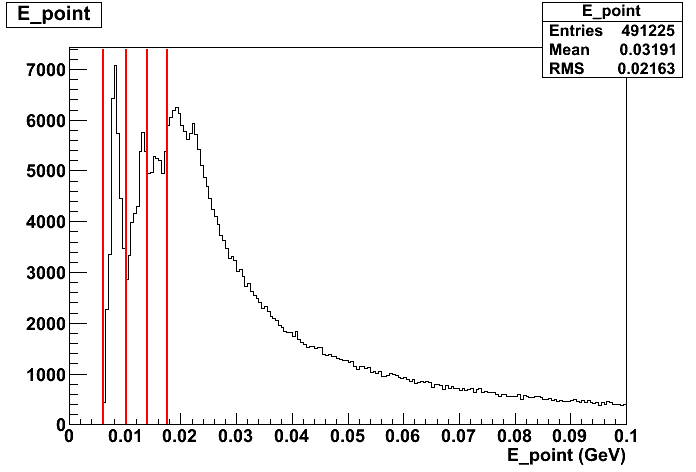BCAL reconstruction 01/16/2012
Look at individual DBCALPoint = upstream hit + downstream hit in same BCAL cell, with energy corrected for attenuation, z determined by time difference of the two hits.
Can get "truth" information about how much energy deposited and where from DBCALTruthCell. Since these correspond to SiPM cells, must sum several DBCALTruthCell to correspond with one DBCALPoint.
Compare DBCALPoint with sum of corresponding DBCALTruthCell 's.
Z resolution
Can look at z-resolution (z_point-z_truthcell) vs E_point:
Below are the sigmas of the (z_point-z_truthcell) distributions (fit to a single gaussian) for different slices of E:
The curve shown is 1.5 cm/sqrt(E), which is already higher than the nominal z-position resolution, sigma_z = 1.1 cm/sqrt(E) .
Something strange going on here ???
Below is (z_point-z_truthcell) for a range of energies in the anomalous region shown above:
Curve is a fit to a sum of two gaussians. Some points are distributed as expected with a sigma of ~12 cm, but approximately half are distributed with a much large sigma. Why??
For very small E, and for much larger E, the distribution looks more like a single Gaussian:
small E:
large E:
E distribution
Energy distribution of DBCALTruthCell (after summing to corresponding to readout cells):
Energy distribution of DBCALPoint :
Where are these peaks coming from? Thresholds?
mcsmear
BCAL mcsmear procedure:
- s_BcalHit_t (->DBCALTruthCell) from hdgeant
- energy smeared, attenuated to ends
- end times smeared
- adjust energy to be consistent with integer # of photoelectrons, add dark hits, smear again due to pedestal
- at this point s_BcalSiPM*Hit_t (->DBCALSiPMHit) are stored
- for each fADC cell:
- sum up energy from contributing SiPM's, energy-weighted average times
- add dark pulses for SiPM's not hit
- if above threshold, store s_BcalfADC*Hit_t (->DBCALHit->DBCALPoint)
Thresholds depend on BCAL layer hit:
- BCAL threshold for layer 1: 3.2 MeV (1 SiPMs summed)
- BCAL threshold for layer 2: 5.3 MeV (2 SiPMs summed)
- BCAL threshold for layer 3: 7.3 MeV (3 SiPMs summed)
- BCAL threshold for layer 4: 9.2 MeV (4 SiPMs summed)
The lowest energy points seen would see 3.2 MeV hits at both ends. We would expect this to result from a hit at the center of the BCAL, which would have an attenuation factor of e^(-(bcal length/2)/(attenuation length))=0.52. So we can calcluate DBCALPoint energies associated with each of the thresholds above (shown as red lines below).
So some of the structure can be explained by thresholds, but not all (it looks like there's an extra peak).
Resolution?
This has to do with points that, when reconstructing z-position from time difference, appear to fall outside the BCAL:
m_zLocal = 0.5 * cEff * ( tUp - tDown ); // if it is outside the module then set it to the end of the module m_zLocal = ( m_zLocal > 0.5 * fibLen ? 0.5 * fibLen : m_zLocal ); m_zLocal = ( m_zLocal < -0.5 * fibLen ? -0.5 * fibLen : m_zLocal );
This value of z is then used to correct the energy for attenuation.
